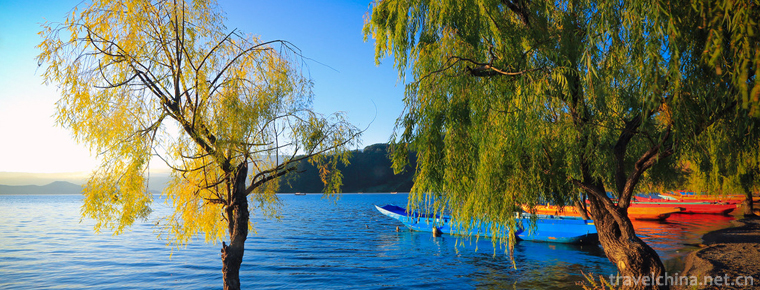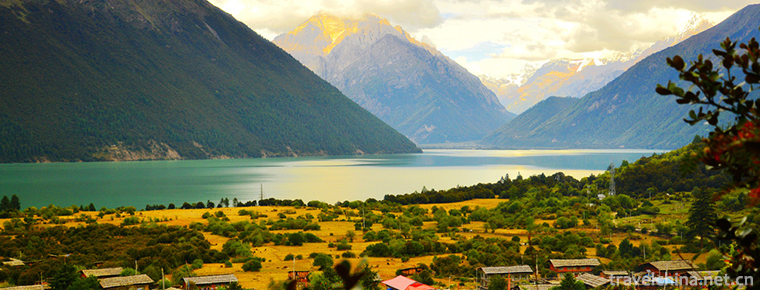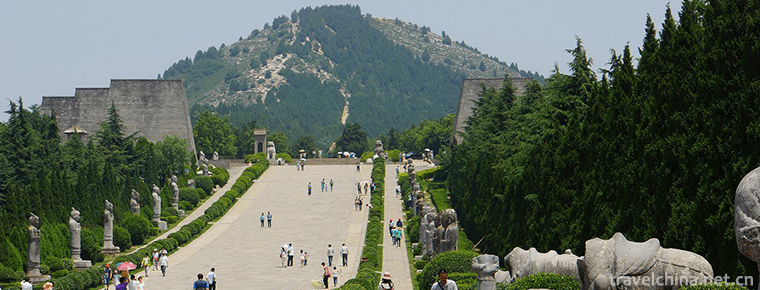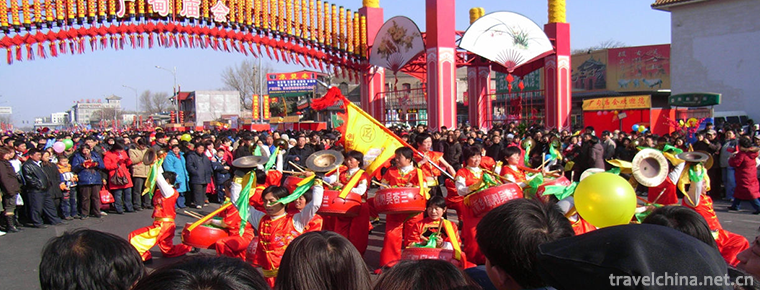Jinggangshan MountainMt Jinggang
Jinggangshan, National AAAAA Tourist Scenic Spot, National Key Scenic Spot, National Nature Reserve, Chinese Cultural Scenic Spot, China's Key Cultural Relics Protection Unit, National Red Tourist Scenic Spot, China's 100 Patriotic Education Demonstration Bases, China's Top Ten Excellent Social Education Bases, China's Excellent Tourist City World Biosphere Reserve, World Heritage Preparatory List.
Jinggangshan is located in Ji'an City, Jiangxi Province, on the border of Eastern Hunan and Western Jiangxi. It is located in the North Branch of Nanling Mountains and the middle part of Luoxiao Mountains. The scenic area covers 213.5 square kilometers and the highest elevation is 1779.4 meters. It is a mountainous scenic tourist area which integrates human landscape, natural scenery and mountain pastoral areas.
There are 11 scenic spots, 76 scenic spots and more than 460 scenic spots in Jinggangshan. Among them, there are more than 30 revolutionary humanistic landscapes and more than 100 revolutionary sites. The main scenic spots are Huangyang boundary, Wuzhifeng, Jinggangshan revolutionary martyr cemetery, Ciping Revolutionary Site Group, Dajing Mao Zedong's old residence, Jinggangshan Revolutionary Museum, Maoping Bajiao Tower, etc. The Memorial Hall of the Association, Longtan, Main Peak, Shuikou, Rhododendron Hill, etc.
Jinggangshan, led by Mao Zedong, Zhu De, Chen Yi and other older generations of proletarian revolutionists, created the first rural revolutionary base area in China with Ninggang County as the center, opened up a revolutionary road with Chinese characteristics of "encircling cities by countryside and seizing political power by armed forces", and was praised as "the cradle of Chinese revolution". "The cornerstone of the People's Republic of China".
Jinggangshan was inhabited in the Eastern Han Dynasty.
When the Qin Dynasty established the county system, it was the dependency of Luling County in Jiujiang County.
During the Taikang period of the Western Jin Dynasty in 280 AD, Xichang and Suixing Counties in Luling County were divided.
During the period of Xianqing in Tang Dynasty (658 years), it was changed to Jizhou Prefecture of Jiangnan West Road.
Since the Ming and Qing Dynasties, the two counties of Yongxin and Longquan (now Suichuan) in Ji'an Prefecture of Jiangxi Province have been divided into two parts.
From October 1927 to February 1939, the Hunan-Jiangxi border formed the situation of "armed separatist regime of workers and peasants". In Jinggangshan, there was a "special border area of Xinsui (Yong) and Sichuan", which was directly under the leadership of the government of workers, peasants and soldiers on the Hunan-Jiangxi border.
In 1950, the Jinggangshan Special Area was established.
In July 1959, the Jinggangshan Administration Bureau was established with the approval of the State Council, under the direct leadership of the Jiangxi Provincial People's Committee.
On July 1, 1965, China issued a set of special stamps for Jinggangshan
From 1966 to 1976, the Jinggangshan Revolutionary Committee was under the jurisdiction of Ji'an District.
In 1977, the provincial "Jinggangshan Administration" was restored.
In November 1981, it was changed to Jinggangshan County, under the jurisdiction of Ji'an District.
In December 1984, with the approval of the State Council, it was established as Jinggangshan City, and the scenic area is under the jurisdiction of Jinggangshan City.
At the 39th World Heritage Conference held in Bonn, Germany, in July 2015, UNESCO officially listed Jinggangshan-North Wuyishan (Wuyishan Development Project) on the World Heritage Preparatory List.
Jinggangshan Mountains are located in the boundary of Eastern Hunan and Western Jiangxi, the North Branch of Nanling Mountains and the middle part of Luoxiao Mountains. It is about 130 kilometers away from Jizhou District, the downtown area of Ji'an City, and 35 kilometers away from Jinggangshan New District (Hongxing Street), covering a total area of 1308.58 square kilometers. Its geographical location is 113 49 to 114 23', 26 27 to 26 49'.
climate
Jinggangshan is a subtropical monsoon climate with distinct seasons and abundant rainfall. The annual average temperature is 14.2 degrees. January is the coldest month with an average temperature of 3.2 degrees. July is the hottest month with an average temperature of 23.9 degrees and an extreme maximum temperature of 34.8 degrees. The annual average rainfall is 1856.3 mm, the annual average rainfall day is 213 days, and the annual average sunshine is 15 degrees. 11 hours, average foggy day 96 days. Because of the altitude and the topography around the mountains, Ciping has the characteristics of long winter, short summer, early autumn and late spring.
Jinggangshan landscape is divided into eight categories: mountains, rocks, waterfalls, meteorology, caves, hot springs, rare animals and plants and mountain pastoral scenery, of which 10 are listed as key cultural relics protection units in China. Jinggangshan is a scenic spot of mountain-type scenic spot. It has the characteristics of Huixiong, strange, dangerous, steep, beautiful and secluded natural scenery.
Jinggangshan Scenic Spot covers 213.5 square kilometers with the highest elevation of 1779.4 meters. There are 11 major scenic spots, 76 scenic spots and more than 460 scenic spots, of which more than 30 are revolutionary humanistic landscapes, 10 are listed as national key cultural relics protection units, 2 are provincial key cultural relics protection units, and 17 are municipal key cultural relics protection units. The main scenic spots (spots) are: Huangyang Boundary, Ciping Revolutionary Site Group, Jinggangshan Revolutionary Martyrs Cemetery, Dajing Mao Zedong Old Residence, Jinggangshan Revolutionary Museum, Maoping Octagonal Tower, Memorial Hall of Masters, Longtan, Main Peak, Shuikou, Dujuan Mountain (Bijiashan), etc.
Five Finger Peak
Wuzhi Peak is located six kilometers southwest of Ciping. It fits with the five fingers of human hands and is 1438 meters above sea level. Wuzhifeng Peak Range stretches from southeast to northwest, stretching for tens of kilometers, no one is left. People can only stand on the "observation platform" on the other side of the bank and look far away. It has been listed as a nature reserve. There is a deep valley in the middle. The bottom of the valley is Longqing River, namely Jinggangshan River. Halfway up the hill there is a "Heavenly Army Cave", which is said to be the Taiping Heavenly Army stationed at that time. There is also a "Longqing Cave" opposite Wuzhi Peak. Legend has it that this cave once lived in the immortal dragon. At that time, the Red Army had fought against ice and snow on this top, and insisted on guerrilla warfare for more than 40 days, hence the name "guerrilla cave". The scenic spot is a natural zoo and botanical garden, where rare birds and animals such as short tailed monkeys, wooden deer, yellow bellied pheasant and so on are found. Longqing River under Wuzhi Peak is rich in stone chickens and fish, and stone ears are abundant on the cliffs of the valley. Wuzhifeng also has a waterfall with a drop of about 200 meters. Wuzhifeng waterfall is the largest one in Jinggang Mountain. At the foot of Wuzhi Peak is a group of mountains and lakes. The background picture of RMB 100 issued in 1988 and 1992 is Wuzhi Peak, the main peak of Jinggangshan Mountain. Tourists often take out a hundred-dollar bill to compare the picture with the finished scene. Longqing River under Wuzhifeng Peak abounds in "Jinggang Three Stones": Stone Chicken, Stone Fish and Stone Ear.
Braised Frog-Shaped Abalone
Walking into the Rhododendron Mountain Scenic Area of Jinggang Mountain in Jiangxi Province (that is, Bijiashan before renaming), in a dense Rhododendron forest, there are several huge stones, standing obliquely, resembling the black-framed golden toad, looking up at the sky day and night, people call it the "golden toad looking at the moon" stone, which is one of the beautiful scenery of Bijiashan. Across the "Golden Toad Looking at the Moon" Stone grew clusters of Alpine Rhododendron forests. Fifty meters west of the stone, there are several large and flat stones. It is said that Wang Zuo, a good man in Jinggangshan, used to base himself on Xingzhou and Xiazhuang at the foot of Bijia Mountain when he was in the green forest. Bijiashan is their habitual place. On these boulders, Wang Zuo and his troops once sat there to discuss the war and to study how to go down the mountain "hanging sheep". "Hanging sheep" was the kidnapping of local tyrants as hostages at that time, demanding huge sums of money and goods, and then giving money to poor people to solve their living problems in addition to their own military expenditures. At that time, "hanging sheep" had "rules", that is, hanging rich without hanging poor, hanging distant without hanging relatives, hanging distant without hanging close.
Size five wells
There are five wells in Jinggangshan, which refer to five villages in the Intermountain basin surrounded by mountains and resembling wells, namely big wells, small wells, medium wells, upper wells and lower wells. Dajing is one of the largest villages and one of the important sites where Mao Zedong, Zhu De, Chen Yi, Peng Dehuai and the Red Army carried out revolutionary activities. On October 24, 1927, Mao Zedong led his troops up to Jinggangshan to Dajing for the first time. Since then, it has become the permanent residence of the Red Army. Mao Zedong, Zhu De and Chen Yi have deployed battles here many times to smash the many military "marches" of the Kuomintang reactionaries.
Dajing is located seven kilometers northwest of Ciping. Mao Zedong's old residence and the old site of the Red Army Medical Center are the places to visit the revolutionary history. In late October 1927, Mao Zedong led the Chinese revolutionary army of workers and peasants to Jinggangshan, where they first arrived. The Dajing Revolutionary Site has been listed as a key cultural relic protection unit in China and is open to the outside world.
Xiaojing is located six kilometers north of Ciping. There is the first hospital of the Red Army, Hongguang Hospital. It has been listed as a key cultural relic protection unit in China and is open to the outside world. "Red Light" Hospital has outpatient clinics, operating rooms, beds and so on, a total of 32 rooms, can accommodate more than 200 wounded and sick people.
Chi Ping
Ciping was the center of the revolutionary struggle in Jinggangshan at that time. It was located in a small basin between Chongshan platforms. Revolutionary Museum and Martyrs Memorial Tower have been built. From Tsiping to various memorial sites and major scenic spots, there are roads connected. Five outposts in the revolutionary battlefield are not far from Ciping, and there are five highways accessible. The Yellow Ocean boundary of the five major outposts, 1343 meters above sea level, is situated at a high elevation and inhabits the mountain pass. The situation is dangerous. The local people call it the Skyscraper Mountains. At that time, the outpost works and the uphill road were still vaguely visible, and the Red Army barracks were well preserved. There is a monument to the victory of the defence of the Yellow Ocean Frontier. The inscription is written by Zhu De. On the other hand, Mao Zedong's "Xijiang Yue Jinggangshan" is engraved. There is a marble screen in front of the tablet, and there are three golden characters on it.
The forest of steles, tablet forest
The stele forest was built in July 1987 and opened to the outside world since the Qingming Festival in 1989. Stele forest consists of stele pavilion, stele gallery and natural stele type. "Jinggangshan Stele Forest" is inscribed by Shu Tong, a calligrapher. The inscriptions include inscriptions of the old Red Army who participated in the struggle in Jinggangshan, handwriting of Party and state leaders, and ink marks of some well-known personages and calligraphers.
HuangYangjie
The Huangyang boundary is 17 kilometers northwest of Ciping Town on Jinggangshan Mountains and 1343 meters above sea level. It is one of the most famous outposts in the five ports of Jinggangshan Mountains (Shuangmashi, Tongmuling, Zhushachong, Bamianshan and Huangyang boundary). It connects the Hunan-Jiangxi border. The Huangyang boundary is dangerous and majestic. On August 30, 1928, the famous Huangyang Ocean was sounded here. In the border defense war, the Red Army of Workers and Peasants of China withdrew the mad attack of the enemy's four regiments with less than one battalion of troops, creating its first record of winning more with less. Comrade Mao Zedong, in his delight, wrote "Xijiang Moon Jinggangshan".
Rhododendron Mountain (Bijia Mountain)
The Rhododendron Hill is 35 kilometers southwest of Ciping and 1357 meters above sea level. It mainly consists of three peaks: mid-peak (Yangmei peak), West Peak (Wangzhi peak) and East Peak (Guandao peak). Far sight is like an ancient penholder, so it is called Bijiashan.
Rhododendron
Every spring, Jinggangshan ushers in the flowering season of azaleas. There are many kinds of Rhododendron in Jinggang Mountain, including Yunjin Rhododendron, Antler Rhododendron, Monkey Head Rhododendron and so on. Among them, the most famous one is the unique rare tree species "Jinggangshan Rhododendron". It not only has the fresh fragrance of flowers, but also has a unique "gradient" color: the beginning of pink, then gradually become purple red, gorgeous, charming, very unique.
Bijiashan, known as "Rhododendron Mountain", is the best viewing spot of Rhododendron in Jinggang Mountain. Every year in April and May, all kinds of azaleas open along both sides of Bijia Mountain ridge, forming a bright "ten-mile azalea corridor" between the high cliffs.
Revolutionary Martyrs' Mausoleum in Jinggang Mountains
Jinggangshan Mausoleum of Revolutionary Martyrs is the main new revolutionary humanistic landscape in Ciping Central Scenic Area. It is located on the North Rock peak north of Ciping. The cemetery was built in 1987 and opened to visitors in October of the same year. In October 1997, the "Jinggangshan Revolutionary Martyrs Monument" inscribed by Deng Xiaoping was completed into ribbon cutting.
Jinggangshan Nature Reserve
Jinggangshan Nature Reserve was established in 1981 and approved by the State Council in 2000 as a national nature reserve with a total area of 21499 hectares. The vegetation in the reserve originates from ancient times and has various vegetation types. It is known as "Tertiary forest", "natural animal and botanical garden" and "subtropical green pearl". There are also natural evergreen broad-leaved forests in the central subtropical zone, which are important bases for studying biological resources in China and even in the global central subtropical zone. Jinggangshan National Nature Reserve has been accepted by UNESCO as a member of the World Biosphere Reserve Network, and has become the only World Biosphere Reserve in Jiangxi Province.
Name origin
The name "Jinggangshan" originated from a local saying that in the early years of the Qing Dynasty, a man named Zixi, named Lan, migrated to a small flat under Wuzhifeng Peak to set up a stockade in order to avoid war. Because it is surrounded by mountains, the terrain looks like a well; a small stream flows past the village, and the visitors call the stream "Jiang", hence the name "Jing Jiang". Because the village is built along the mountain to the river, it is also called Jingjiang Mountain Village. Later, because of the homonym of "Jiang" and "Gang" in the Hakka accent, the village was also called "Jinggangshan Village". Later, Huang moved to this place. After living for a period of time, he felt that the village was not built on the hilltop, but at the foot of the hill. He removed the word "hill" from the word "Jinggangshan village", and called it "Jinggangshan village". So there is the place name "Jinggangshan". Wuzhi Peak is also known as "the main peak of Jinggangshan".
Red Culture
In October 1927, Mao Zedong, Zhu De, Chen Yi, Peng Dehuai, Teng Daiyuan and other older generations of proletarian revolutionaries led the Red Army of Chinese workers and peasants to Jinggangshan to create the first rural revolutionary base area in China with Ninggang County as the center, and opened up a revolutionary road with Chinese characteristics of "encircling cities with countryside and seizing power by armed forces". Since then, the little-known Jinggangshan Mountains have been recorded in the glorious history of the Chinese revolution, known as "the cradle of the Chinese revolution" and "the cornerstone of the People's Republic of China". From October 1927 to February 1930, the struggle in Jinggangshan lasted for two years and four months. Although it was not long, it opened up a successful road for China, leaving behind precious spiritual wealth for future generations, namely, Jinggangshan Spirit, firm faith and dare to break new paths. Its essence is: Firstly, firm ideals and beliefs; secondly, the ideological line of seeking truth from facts; thirdly, the basic principle of the Party's management of armed forces; fourthly, the flesh-and-blood relationship between cadres; fifthly, the entrepreneurial spirit of arduous struggle. Up to now, there are more than 100 well-preserved sites of the struggle and revolution in Jinggangshan, 21 of which are listed as key cultural relics protection units in China. Six are listed as provincial key cultural relics protection units, and 35 are listed as civilized protection units at the municipal level. Therefore, as one of the demonstration bases of patriotism education in China, Jinggangshan has become an ideal classroom for revolutionary traditional education and patriotism education. Jiang Zemin, Hu Jintao, Li Keqiang and other party and state leaders went to Jinggangshan to commemorate the great achievements of the older generation of proletarian revolutionaries.
Spiritual biography
In the annals of the Chinese revolution and the history of the PLA's army building, Jinggangshan occupies an extremely important position. Mao Zedong and his comrades-in-arms in the struggle to open up the Jinggangshan base area, through hard practice, have found the right way to "encircle the city in the countryside and seize power by armed forces"; have clearly defined the important system of "building branches in the company" and "carrying out three major tasks"; have formulated the "three major disciplines and six major disciplines" that the people's army must abide by. Note. The latter "Three Disciplines and Six Attentions" has been enriched and perfected into "Three Disciplines and Eight Attentions", and is still the operational criterion for every member of the Chinese People's Liberation Army. However, due to various reasons, the literature left behind by the Jinggangshan struggle is not much, and the memory articles written by the witnesses are not much. This makes the record of Jinggangshan relatively thin, especially the lack of lively, vivid and flesh-and-blood plot. In view of this, more than 90 people, such as Chen Haosu, the son of Chen Yi, Luo Ronghuan, Peng Gang, Su Rongsheng, Huang Kecheng and Tan Jingxian, the son of Tan Zheng, agreed to write their own essays to record the experiences of their predecessors in Jinggangshan and attach them to their family treasures. The pictures collected for many years are combined into a picture biography of Jinggang Feelings, which is published by the Central Literature Publishing House.
In addition to the descendants of the founding fathers and generals, the writers of Jinggang Feelings also include the relatives of the martyrs who died in Jinggang Mountain or were wrongly killed in Jinggang Mountain. Including Chen Yian's son, He Tingying's nephew, Wang Zuo, Yuan Wencai's great grandson and grandson, etc. "Firm faith, arduous struggle, seeking truth from facts, daring to break new paths, relying on the masses and daring to win". The painting biography of Jinggangshan Feelings annotates the spirit of Jinggangshan with a series of experiences and stories.
Jinggangshan Scenic Spot is the first batch of national key scenic spots published by the State Council in 1982. In 1991, it was ranked one of the top 40 tourist attractions in China. It is also one of the 100 patriotic education demonstration bases in China and the top 10 excellent social education bases in China.
Jinggangshan Scenic Area is the first batch of national 5A scenic spots, China's cultural scenic spots, the first batch of national key scenic spots, China's top 40 tourist attractions, China's excellent tourist cities.
Best travel time
The best time for Jinggangshan tourism is from April to October every year.
In spring (March-May), the Jinggang Mountains are in full bloom, and the azaleas are in full bloom. Especially in April and May, when the ten-mile azaleas are proudly open, it is the perfect time to visit the Jinggang Mountains. Jinggangshan "Ten-mile Rhododendron" is well-known in the world, but in the most beautiful place where the Rhododendron blossoms, the rainbow waterfall under Wuzhi Peak, the water and sky are uniform, the flowers are red all over the country, the water of Yucui Lake is sparkling, boating, is a good place to enjoy the scenery and sit.
Summer (June-August) Jinggang, with cool mountains and rivers, birds singing and streams, can be fun, is the best season for water, summer and mountain watching. Invisible in the green bamboo sea, in the stream happy. But July and August are also summer files and party members'activities, with a large number of people.
In autumn (September-November), Jinggang, Dangui fragrance, red leaves Manshan, Chinese fir, yellow maple and red, layers of forest dyed. The farmhouse in Qingxi reflects it, and the golden rice ears give the fields a strong autumn makeup.
Winter (December - February) Jinggang, pine and fir piles of snow, white flocculent flying, Yinfeng ups and downs, a school of northern scenery. The crystal clear ice-cinnamon fog makes Jinggangshan white and flawless, which is a good place for photography and snow appreciation. But at this time, the mountain may be closed due to weather reasons, tourist buses are out of service, do not recommend this time to travel.
Clothing Guide
Jinggangshan is the coldest month in January and the hottest month in July. It is wet and foggy in spring, cool and showery in summer, high water in autumn and little bitter snow and rain in winter. The average temperature in Jinggang Mountain is 6 - 10 C lower than that in Nanchang City. The weather is cool in the morning and evening. Except in summer, coats should be prepared in other seasons.
Consumption level
The biggest consumption of Jinggangshan Scenic Area is tickets and accommodation. The expenditure of 260 yuan (including transportation fee) is about 250 yuan for general hotels and 45 yuan for catering. Therefore, it is very comfortable to go to Jinggangshan and spend about 350 yuan/person/day except tickets.
Ticket information
Jinggangshan scenic spot implements one-ticket system, that is to say, if you go to Jinggangshan scenic spot for sightseeing, you need to buy tickets. Tickets are in the form of paper postcards. The ticket price is 190 yuan per person. The valid time is 5 days (can be extended).
Holding tickets for Jinggangshan tourism can visit 21 scenic spots: Huangyang Boundary, Longtan, Baizhuyuan, Mint, Xiaojing Red Army Hospital, Dajing Old Residence, Shuikou, Beishan Martyrs Cemetery, Ciping Old Residence, Red Army Valley, Main Peak, Nanshan Park, Bijiashan, Maoping Bajiao Tower, Infantry Yunshan Training Ground, Red Fourth Army Department, Xiangshan Temple, Maoping Red Army Hospital, Longjiang Academy, Jinggangshan Monument and Guishi Square (Jinggangshan Revolutionary Museum is open free of charge).
Free ticket object
Active servicemen (including retired servicemen and disabled servicemen), retired cadres, journalists, tour guides, elderly people over 70 years old, national photographers, writers and children under 1.3 meters, and heads of travel agencies qualified as general managers.
Ticket location
There are four ticket outlets in Jinggangshan. Central Ticket Booking Station: Jinggangshan Tourist Service Center at the end of Taijing Expressway Connection Line; South Ticket Booking Station: Bijiashan Scenic Park; West Ticket Booking Station: Maoping Golden Hook Bay; Ciping Ticket Booking Station: Nanshan Road, Ciping. Tourists can buy tickets at the above four outlets.
Post Office
There is a post office in Tianjie and Ciping Town, Ciping Town, Jinggang Mountain.
Ciping Central Branch of Jinggangshan Post Office
Address: No. 1-1 Tongmuling Road
China Post Tianjie Business Office
Address: Tianjie, Ciping Town, Jinggangshan City, Ji'an City
Medical care
There is a large hospital in Ciping Town, Jinggangshan. The general pain is not a problem.
Jinggangshan People's Hospital
Address: No. 8, Huangzhuao Road, Ciping Town, Jinggangshan City, Jiangxi Province
Safety matters
Jinggangshan is already a very mature scenic spot, but when you go out, you still need to pay more attention, always remember that safety is the first.
1. Oxygen is plentiful in the mountains and there are many old dead branches and rotten leaves. Please do not smoke or cook or make bonfires in the scenic spots, so as to avoid forest fires.
2. High mountains and steep roads. It is better to travel slowly and not to overspeed. For the sake of safety, we must "walk without looking at the scenery, see without walking". It's dangerous to walk and watch.
3. When climbing a mountain, you can bend forward slightly and walk in the "Z" shape. This is both labor-saving and relaxing.
4. When swimming in summer in Shuikou and Longtan Waterfalls, do not swim in the water. First, swimming is forbidden. Second, the mountains and rivers are extremely cool and dangerous.


















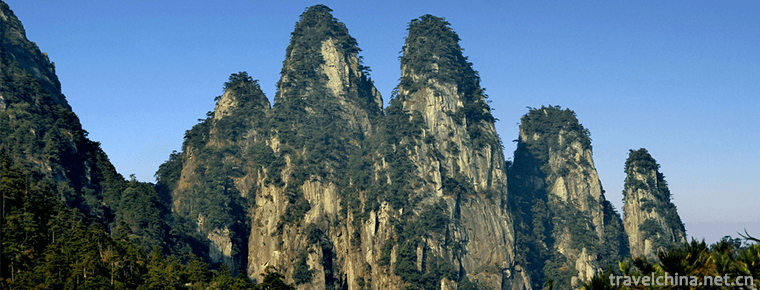
-
Lake Manasarovar
Ma Pang yongcuo is 35 kilometers east of the town of Pu Lan county.
Views: 173 Time 2018-10-12 -
Lugu Lake
Lugu Lake, commonly known as Zuozuohai, the ancient name Lede Sea.
Views: 113 Time 2018-10-17 -
Linzhi Basongcuo Scenic Area
Basongtao, also known as Caogao Lake, means "green water" in Tibetan. It is about 18 kilometers long. Its surface area is about 27 square kilometers. .
Views: 158 Time 2018-12-12 -
Qianling Scenic Area
Qianling Scenic Area, located in Qianxian County, Xianyang, Shaanxi Province, covers an area of 1002.71 square kilometers. Population: 580,000 (2011), postcode: 713300..
Views: 136 Time 2018-12-22 -
Changdian Temple
Changdian Temple Fair is a traditional folk custom and folk religious belief activity in Beijing. Among the many temple fairs in the old capital city, only the temple fairs in Changdian.
Views: 172 Time 2019-04-16 -
South China Sea Channel
South China Sea Channel is a traditional folk culture in Wenchang City, Hainan Province. Local fishermen have compiled their own "secret book" for navigation since ancient times. It is a han.
Views: 148 Time 2019-06-07 -
Brocade Weaving Skills of the Zhuang Nationality
After thousands of years of development, the brocade has its own system of three categories, more than 20 varieties and more than 50 patterns. It is famous for its durability, exquisite skills, unique.
Views: 200 Time 2019-08-16 -
National characteristics of Chinese embroidery
Nationality is the distinctive feature of Qinghai Folk Embroidery. In the long process of development, Qinghai embroidery has formed its own unique style. Due to the consistency of language, religious belief, festival etiquette, culture and entertainment,.
Views: 333 Time 2020-12-12 -
The tertiary industry of Panzhihua
In 2018, the total retail sales of consumer goods in Panzhihua reached 36.126 billion yuan, an increase of 10.8%. In terms of business location, the retail sales of consumer goods in urban areas were 33.036 billion yuan, an increase of 10.7%; the retail sales of consumer goods.
Views: 208 Time 2020-12-14 -
Suining medical and health
By the end of 2019, there are 3725 medical and health institutions in Suining, including 76 hospitals (63 private hospitals) and 3622 primary medical and health institutions; there are 21400 beds in medical and health institutions and 18200 health technicians.
Views: 382 Time 2020-12-16 -
Leshan medical and health
By the end of 2018, Leshan City had 3259 health institutions (including village clinics). Among them, there are 102 hospitals, 207 health centers, 12 maternal and child health centers (stations, stations), 12 centers for Disease Control and prevention, 12 health .
Views: 330 Time 2020-12-17 -
History and culture of Yibin
Yibin has 34 world-class, national and provincial scenic spots and 58 national and provincial key cultural relics protection units. Among them, there are seven cave cliff tombs (Eastern Han Dynasty), Jiuzhou tower (Song Dynasty), Daguanlou (Qing Dynasty), etc..
Views: 378 Time 2020-12-18

